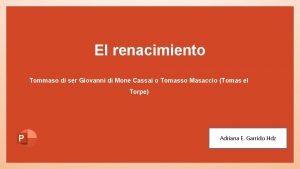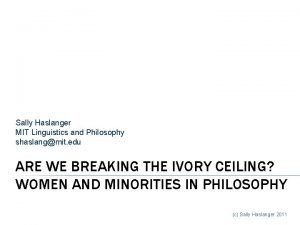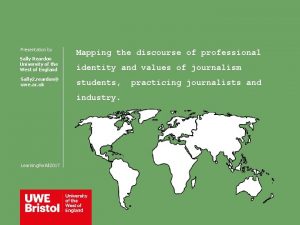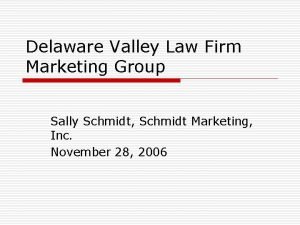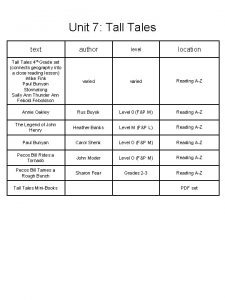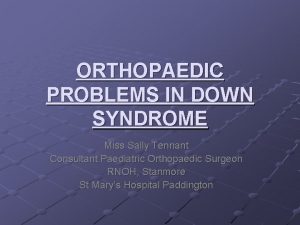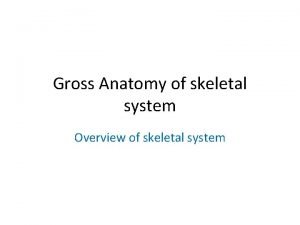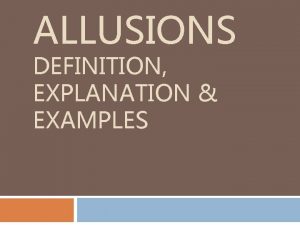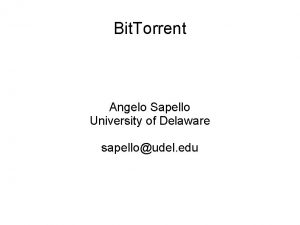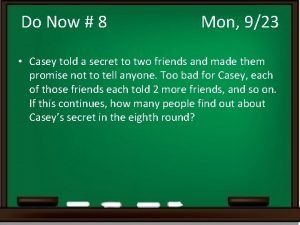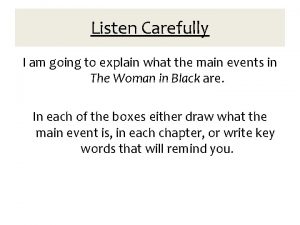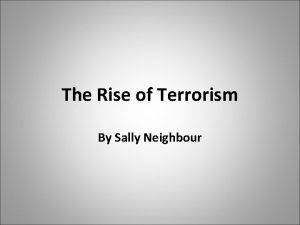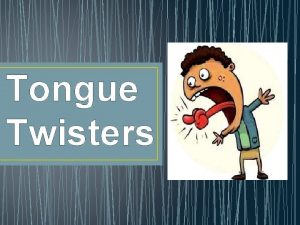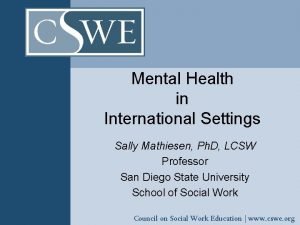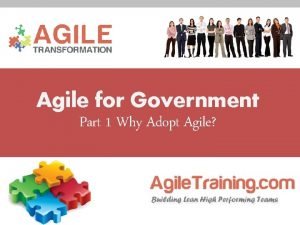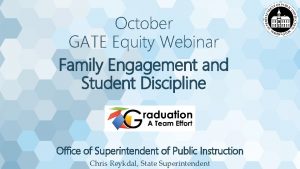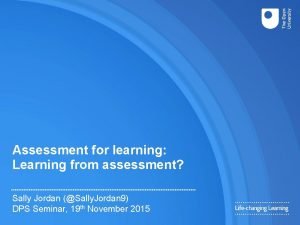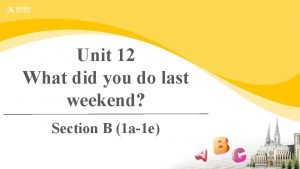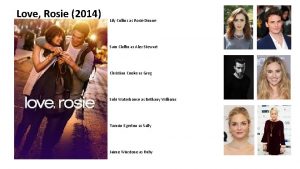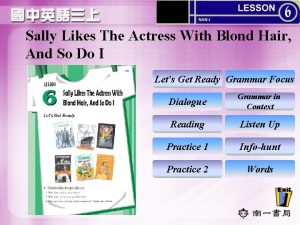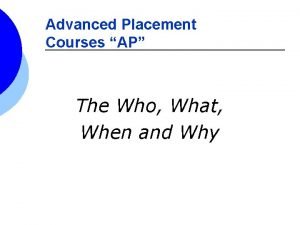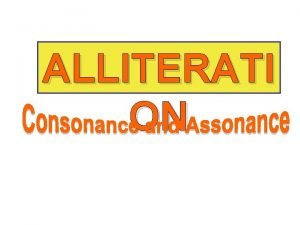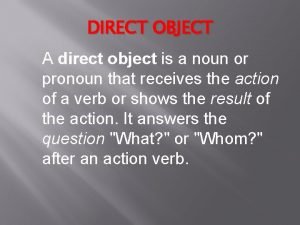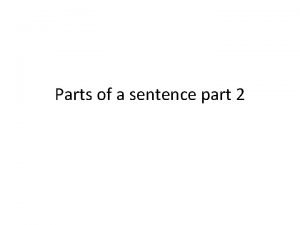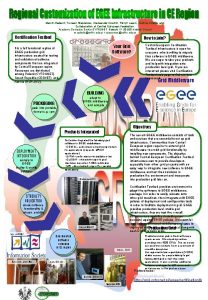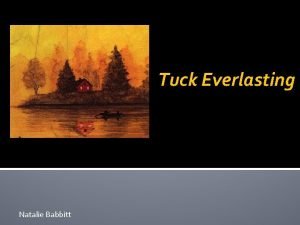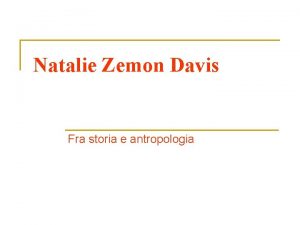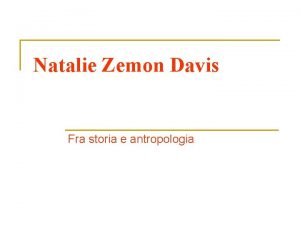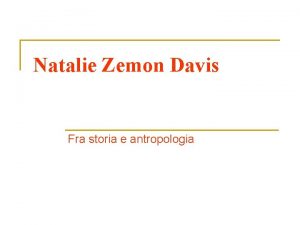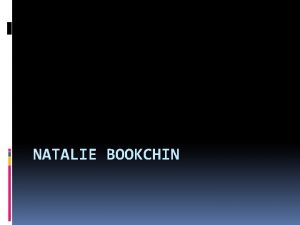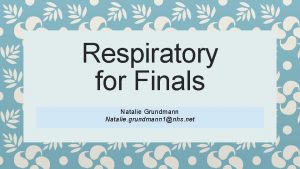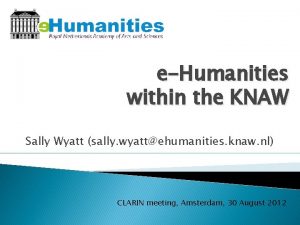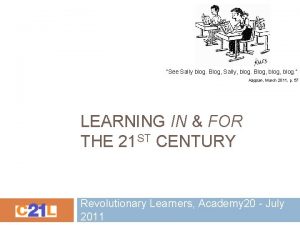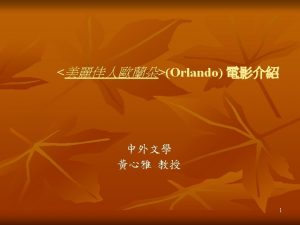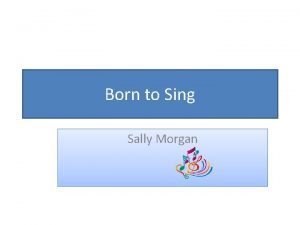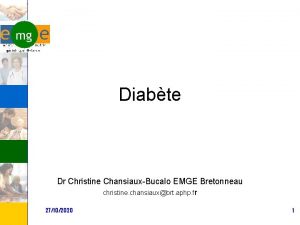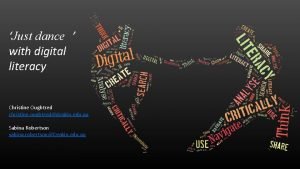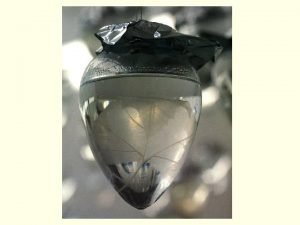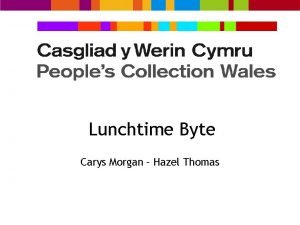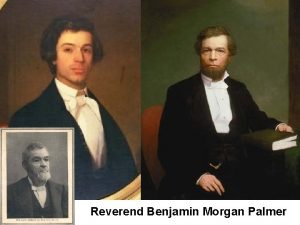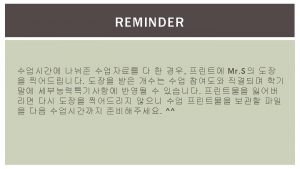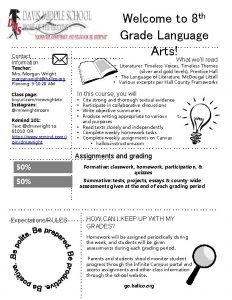Natalie Cassai Sally Morgan Christine Kusznir Fanchon Ferrandi





























- Slides: 29

Natalie Cassai, Sally Morgan, Christine Kusznir, Fanchon Ferrandi, Domna Margaras

Presentation Outline 1. Introduction to Autism Spectrum Disorders 2. A starting point (Sally) 3. Transitioning into High School (Domna) 5. Classroom strategies (Christine and Fanchon)

Autism spectrum disorder is the term used to describe a group of complex neurobiological disorders that includes Autism Disorder, Asperger's syndrome and Pervasive Developmental Disorder. Autism is the most commonly occurring form of ASD. The term ‘spectrum' is used describes the wide variety and differing levels of severity of symptoms found in children with ASD.

1 in 100 children will be diagnosed with ASD Boys out-number girls: 4 to 1 Lifelong disability with no cure Approximately 75 per cent of children with a diagnosis of ASD are of low intelligence, while around 10 per cent may demonstrate high intelligence in specific areas such as mathematics or computer studies Often have sensory sensitivities – they may be under- or over-sensitive to any of the five senses. Children and adults with ASD have difficulties that are usually grouped into 3 areas

1. Verbal and non-verbal Communication skills vary depending on the intellectual and social development of the individual child or adult. Some people with ASD have little speech and others appear to have normal speech. May say odd and inappropriate things, repeat verbal statements made by another person, talk about one specific topic for long periods of time, say things that are not relevant to the current conversation. Difficult to keep eye contact with others and understand non-verbal communication such as facial expressions and hand gestures including pointing.

2. Social Awareness and Interaction Difficulty following social rules, making them appear unfriendly. Tend to avoid looking at the person talking and do not appear to be listening. When interacting with others, may not follow common social behaviours. May touch and even lick others, or make blunt and impolite comments.

3. Interests and Activities Rarely play games or engage in imaginative play. May use toys and other objects in unusual ways (e. g. , lining up objects, spinning and flicking objects). Can become obsessed with an item such as a piece of string or a pencil and carry it around constantly, and may collect. May be more sensitive to touch and the taste or texture of some foods. Rejecting a family member trying to give them a cuddle or insisting that all labels are cut off their clothes because the touch of them on their skin is unbearable. Dislike change and being in new situations.

DECD Resources Most info has been moved to the DECD Intranet, not accessible to the general public The Special Education section has a page on Autism Intervention Program http: //www. decd. sa. gov. au/speced/ Short-term program (up to 8 terms) Offered at The Heights Pre-school and R-12 School, and Blackwood Primary and High Schools Intensive focus on key areas of challenge for students with Autism and Aspergers, and transition back to the student’s local school

http: //www. decd. sa. gov. au/docs/documents/1/asdstartingguide. pdf Due for review in 2010, says “currently under review” Aimed at teachers, with a student in their class who has been newly identified with Autistic Disorder or Asperger’s Disorder

Autism Spectrum Disorders: A Starting Guide for Teachers Intro to Autism and Aspergers Step-by-step: how to get info in the beginning Outline of the three key challenging skill areas (communication, social interaction, behaviour and sensory issues) Key Services (including a link to Special Education Resource Unit, which has teaching resources but you need a DECD login) How to access DECD Disability Support Program 8 Step Summary at the end Autistic Disorder/Asperger’s Disorder Support Plan in Appendix Links to more information and further reading (LOTS) including websites with teaching resources

Autism SA http: //www. autismsa. org. au

Autism SA Not-for-profit organisation registered as a charity Provides support to individuals, families and schools Online form to complete Request for Services “Please note: We are currently experiencing a large volume of requests for services in the north and south regions. The consultant for your allocated region will be in contact with you as soon as possible. If you have a matter which is urgent please contact the consultant for your region on the details shown or contact Infoline on 1300 288 476” Online library ($66 personal membership, $88 organisational membership)

Transitioning to Secondary School with a Autism Spectrum Disorder. “What do we know about the transition and how can we make it a smooth one? ”

About the transition! Transitioning from primary school to secondary school, especially from a school that isn’t and R-12 school can be daunting even for students with no learning difficulties/disorders. Single classrooms/year level teacher TO many classrooms/subject teachers This shift means constant day to day change and more importantly a large shift in ROUTINE can be one of the most helpful management strategies for a students with an Autism Spectrum Disorder.

Helpful Resource “Learning Links” Learning Links Fact Sheets “Teaching students with an autism spectrum disorder” “Ten things every child with autism wish you knew” How we can gain knowledge from these fact sheets How the fact sheets can assist us in helping a students through a smoother transition. http: //www. learninglinks. org. au/index. php/resources/fact-sheets/

Helpful Resource “Autism Education Trust” The Transition Toolkit – Alice Stobart A toolkit that can give teachers insight into some potential challenges both they and the student could face as they transition through the different year levels Discusses Autism Strategies Transition in all learning stages (early childhood, primary, secondary) The different transitions - E. g. daily/weekly

More about the difficulty of transitions! “Change is difficult for many people on the autism spectrum. This is because of an impairment in flexibility of thought, and anxiety linked to the unknown, common in many people with autism. People on the autism spectrum have difficulties in predicting what might happen in a new setting so prefer to stick with what is familiar. ” “People with autism often have an intense focus once engaged with a task, and it can be difficult for them to disengage from one task and re-engage in a new activity, particularly if the previous task was not finished; thus ongoing projects in secondary school or college can cause anxiety. ” http: //www. autismeducationtrust. org. uk/resources/trans ition%20 toolkit. aspx

How we can best use this toolkit! Implementing “transition teams” – creating a sense of structure elevating the fear of the “unknowns” Doing so early on in the process – SSO integration Providing transition packs – a who, what, where and when approach (transition pack checklist) Communicating messages between home and school – organised diaries Structuring work/tasks that will allow them to apply their many know skills.

Autism Speaks https: //www. autismspeaks. org Non Profit Organization. Autism Speaks is an autism advocacy organization in the United States that sponsors autism research and conducts awareness and outreach activities aimed at families, governments, and the public.

Toolkits The website features toolkits containing information, booklets, handouts and links. These can be downloaded for free once you sign up to the website and shared via email.

To assist in individually supporting students with Asperger's, the toolkit provides questionnaires for the student and family to complete so that the teacher can personally tailor their teaching strategies and the classroom environment.

School Community Toolkit An important part of supporting your student with Asperger's is preparing your school community by ensuring they have appropriate knowledge and understanding. The toolkit includes a suggested program for an assembly or education session with information, handout and links to further information and videos.

The toolkit contains a ‘How to be a friend’ leaflet for classmates, a useful resource for the student’s peers.

Useful Resources http: //www. nationalautismresources. com/ autism-school. html Wide range of well tested behavioral support materials that will increase independence, understanding, and competency. visual timers, communication pictures, and charts provide the visual supports your students need to stay on task and increase motivation. Apps store: Touch Autism: Art, assessment, social skills, Book, communication, creative play etc…

Strategies for teaching student with ASD http: //www. learninglinks. org. au/ wp-content/uploads/2012/11/LLIS 03_Autism-Strategies. pdf By Sue Larkey: Autism specialist Strategies to help student finish tasks, work environment, work task, schedule, transition into a new classroom and the importance of visual cues

Sue Larkey

Educating children about autism in an inclusive classroom http: //www. gov. pe. ca/photos/original/ed_autisminc. pdf

10 activities for children with Autism http: //www. education. com/magazine/article/10 -activities-children-autism/

Conclusion Every student with Autism is individual Strategies need to be selected and tailored to the individual in collaboration with student, parents and school community Evaluate student early and make a plan to help create independence and enjoyment in classroom There are MILLIONS of resources
 Tommaso di giovanni
Tommaso di giovanni Re-aim
Re-aim Sally reardon
Sally reardon Sally schmidt
Sally schmidt Davy crockett and the frozen dawn
Davy crockett and the frozen dawn Dr sally brown
Dr sally brown Sally tennant orthopaedic
Sally tennant orthopaedic Sally hanley
Sally hanley Sally left the party to take cathy home
Sally left the party to take cathy home Mona lisa smile allusion
Mona lisa smile allusion Sally lannin
Sally lannin Sally d'angelo torrent
Sally d'angelo torrent Please excuse my dear aunt sally
Please excuse my dear aunt sally Listen carefully. i'm going to give you
Listen carefully. i'm going to give you Sally neighbour
Sally neighbour Tongue twisters examples
Tongue twisters examples Sally
Sally Sally elatta
Sally elatta Sally guzman edmonds school district
Sally guzman edmonds school district Sally jordan model
Sally jordan model What __________ you _________ last weekend?
What __________ you _________ last weekend? Ashley is comparing three investment accounts
Ashley is comparing three investment accounts Lily collins rosie dunne
Lily collins rosie dunne Sally dickinson fao
Sally dickinson fao Sally likes
Sally likes Umich ap exam credit
Umich ap exam credit Alliteration examples sally
Alliteration examples sally Sally barakat
Sally barakat Noun as direct object
Noun as direct object Sally (run, runs) to the park every day
Sally (run, runs) to the park every day
